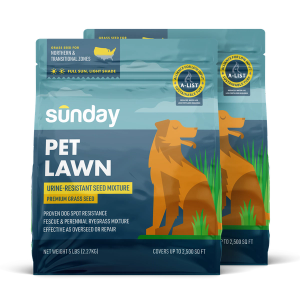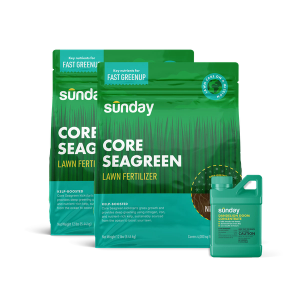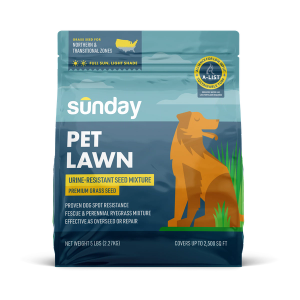Growing the right grass for your lawn
Having the right grass type for your climate is one of the most important factors for a thriving lawn.
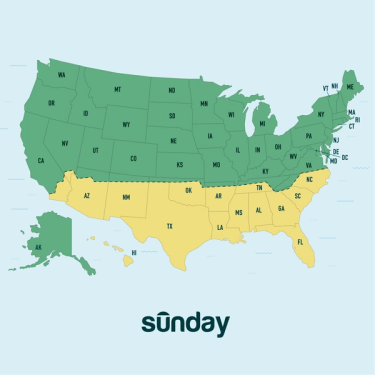
Cool-season grasses
Grasses like tall and fine fescues, perennial ryegrass, and bluegrass grow the fastest during the fall and spring, preferring temperatures between 50–80 degrees Fahrenheit. Cool-season grasses stay green until temperatures drop below 32 degrees for extended periods and can survive subfreezing temperatures.
Common cool-season grass types include:
- tall fescue
- fine fescue
- Kentucky bluegrass
- perennial ryegrass (and annual ryegrass, too!)
Warm-season species like St. Augustine, Zoysiagrass and bermudagrass prefer the heat of southern climates. They grow the fastest during the summer, preferring temperatures between 80–95 degrees Fahrenheit. They lose their green color if winter temperatures drop below 50 degrees for extended periods of time; some species cannot survive extended periods of subfreezing temperatures.
Common warm-season grass types include:
- zoysiagrass
- bermudagrass
- St. Augustine
- kikuyugrass
- bahiagrass
- centipede grass
Some cool- and warm-season species can survive in both their preferred climate and in the "transitional zone". The transitional zone is the area which is both hot in the summer and cold in the winter.
In the U.S., the transition zone encompasses the eastern central and the mid-central regions of the country. Bermudagrass and tall fescue type grasses are the most commonly grown grass types in the transition zone.
- Bermudagrass is a warm-season grass more widely grown in the southern edge of the transition zone.
- Tall fescue, a highly adaptable cold-season grass, is generally the choice for central and northern transition zone areas.
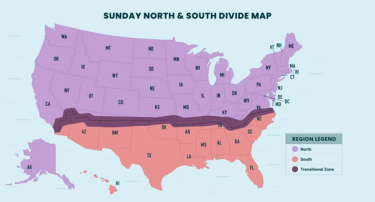
Sunday Tip:
Remember: There are several subclimates in the transitional zone, so what works best in Norfolk, VA won’t be the same as Flagstaff, AZ!
Your grass species superpowers
In addition to preferring warmer or cooler temperatures, different species of grass have different tolerances for a number of traits (drought tolerance, shade tolerance, etc.). Below are relative rankings for the following traits in common lawn turf grasses: heat, cold, drought, and shade. Remember, climate type is always the first and most important thing to consider.
It's especially helpful to know your grass's strengths and weaknesses when:
Cool-season grass tolerances
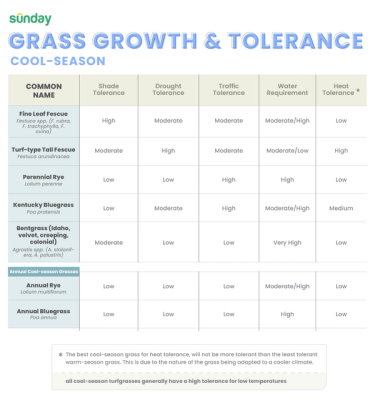
Warm-season grass tolerances
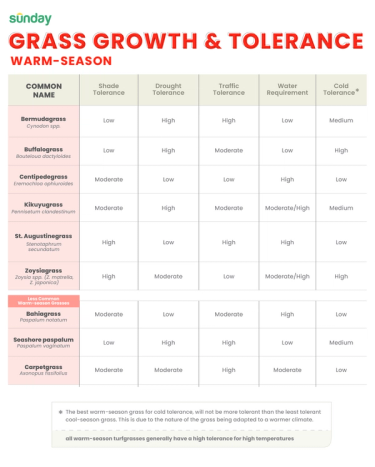
Growing more than one type of grass?
Cool-season lawns tend to be a blend of one, two, three—or even more grass types! Growing a blend of grasses in your cool-season lawn increases diversity and resilience since most cool-season grasses get along pretty well. It’s unlikely you have just one type of grass growing if you live in the cool-season grass zone.
Warm-season lawns more often than not tend to be just one type of grass. Warm-season grass types are well adapted to their specific climate. Folks in the warm-season zone tend to know their grass type and are loyal to one type of grass if it’s working for them!
Did you know all Sunday lawn plans support your grass type?
All Sunday custom lawn plans are built to fit YOUR grass. It doesn't matter if you're growing cool-season grasses or warm-season grasses—your custom selection of fertilizer formulas are made to meet the needs of your grass.
Why? Custom lawn plans focus more on your soil and climate, rather than specific grass species, because both of these factors have a bigger impact on the health of your grass. Our soil test won’t determine what type of grass is growing in your lawn, but it will tell us exactly how much organic matter, nitrogen, and other macro and micro nutrients your soil has to support a healthy lawn—and healthier, more resilient grass.
Let's get growing
Our lawn engine uses satellite data to map out your lawn size and determine things like average rainfall, common weeds, and pest activity.











